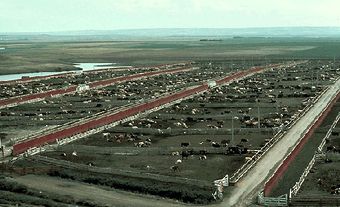Gravity
Gravity, the fundamental physical property of attraction between all bodies, is here considered mainly as it relates to the study of the Earth. Measurements of the acceleration resulting from gravity are used in physical geodesy, which studies the size and shape of the Earth, and in geophysics in determinations of the distribution and structure of masses beneath the Earth's surface. Gravitational acceleration is measured in "gals" (after Galileo): 1 gal = 1 cm per second. At the Earth's surface, the acceleration is approximately 980 gals and varies with latitude and elevation through a range of about 7 gals. Absolute measurements, accurate to the order of 0.01 milligals, are now being made using LASERS and advanced ELECTRONICS for direct observations of the acceleration of freely falling bodies. Relative measurements, accurate to 0.05 milligals or better, are routinely made using easily portable gravity meters (gravimeters), which measure differences of attraction with a delicate spring mechanism. Such instruments have been adapted for use on the seafloor, on ice surfaces or in moving ships and aircraft. Gravity fields have also been calculated from the precise tracking of SATELLITES around the Earth, the moon, Mars and other planetary bodies.
Gravity measurements are compared to an internationally adopted theoretical formula determined from basic parameters defining the shape of the Earth. Differences between measured and theoretical values are calculated to give the free-air gravity anomaly, ie, the value the measurement would have if the point of observation were at sea level; or the Bouguer gravity anomaly, which is calculated assuming that there is a slab of rock of uniform density (commonly 2.67 megagrams/m3) between the point of observation and sea level. In mountainous regions, the effect of rugged terrain must also be calculated.
Gravity maps are produced by drawing contours joining points of equal gravity anomaly, or by assigning colours to the average gravity anomaly in a pixel or unit cell to produce a solid colour map using a modern automated plotter. Regions of relatively positive anomaly (gravity "highs") and relatively negative anomaly (gravity "lows") correspond to mass excesses and deficiencies beneath the surface. The Gravity Anomaly Map of Canada 1987 combines Bouguer anomalies on land and free-air anomalies offshore, showing coverage of approximately 80% of Canada and adjacent oceans by observations 12 km apart or closer. The pattern of anomalies over Canada reflects its geologic history of ancient mountain-building episodes, volcanic activity, deposition of sediments and other GEOLOGICAL PROCESSES.
Gravity measurements are used by exploration companies in determining the most promising region for economic exploitation of oil, gas and mineral resources. For example, in the Beaufort Sea, the Arctic Archipelago and the seafloor off Nova Scotia and Newfoundland, analysis of gravity anomaly patterns has been a significant part of the search for oil-bearing and gas-bearing formations. In Canada gravity anomalies have also been used to trace the extent of mineral provinces. A good example is the Manitoba Nickel Belt, where ore bodies are distributed along the axis of a negative gravity anomaly. Other mineral provinces so examined include the iron ranges of Labrador, the Sudbury Basin, the Abitibi-Timmins belt and the copper-bearing rocks of the western cordillera. Although few ore bodies are discovered directly by reconnaissance gravity mapping, detailed gravity surveys are often used to define the extent of ores and estimate reserves. Tonnages of massive sulphide deposits in the Northwest Territories and northern Ontario and salt volumes in Nova Scotia have been determined in this way.
Gravity measurements are also used in studies of movements of the Earth's surface associated with large EARTHQUAKES, VOLCANOES or the motions of the continents; or the uplift of regions such as Hudson Bay, which is still rising at a rate of about 2 cm per year after being depressed by the last continental GLACIATION more than 10 000 years ago.

 Share on Facebook
Share on Facebook Share on X
Share on X Share by Email
Share by Email Share on Google Classroom
Share on Google Classroom

